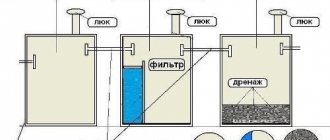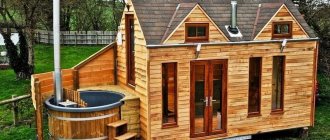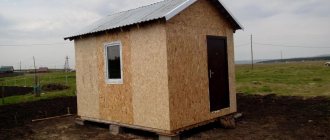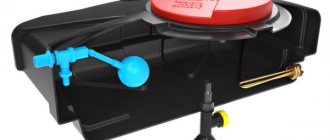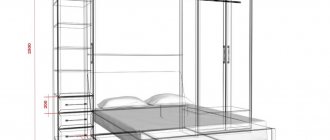In conditions of remoteness from a centralized power supply system (in the country, outside the city), the need to find a suitable source of electrical energy leads to the consideration of options for building a power plant with your own hands. Most often, projects of environmental power plants are considered, the energy source of which is natural factors. Such power plants include wind, solar and water. Such units offered for sale, as a rule, are too expensive and do not always meet the requirements of a specific situation on the part of electricity consumers.
An important disadvantage of purchased power plants is the need to spend quite a lot of money at a time, which is not always feasible. At the same time, a do-it-yourself power plant is a project that can be created gradually, the costs for it stretch over time, and the result of its work can be felt by testing it with practical examples. It is important to understand that whatever the source of energy (sun, wind or water), a home-made power plant in any case must include a battery storage device for electrical energy and an electronic system that controls the operation of the electrical power complex.
Peculiarities
A wood-fired power plant is not a new invention, but modern technologies have made it possible to somewhat improve previously developed devices. Moreover, several different technologies are used to generate electricity.
In addition, the concept of “wood-burning” is somewhat inaccurate, since any solid fuel (wood, wood chips, pallets, coal, coke), in general, anything that can burn, is suitable for the operation of such a station.
Let us immediately note that firewood, or rather the process of its combustion, acts only as an energy source that ensures the functioning of the device in which electricity is generated.
The main advantages of such power plants are:
- The ability to use a wide variety of solid fuels and their availability;
- Receive electricity anywhere;
- The use of different technologies makes it possible to obtain electricity with a variety of parameters (sufficient only for regular phone recharging and up to powering industrial equipment);
- It can also act as an alternative if power outages are common, as well as the main source of electricity.
First in everything
How to repair a gas generator yourself. what you need to know
GES-1 was in many ways ahead of other power plants. In 1899, a cable was laid from here to power the first Moscow tram line. In 1926, the first central control center in the USSR was created here, in 1933 the first domestic heating pipe with a capacity of 12 megawatts was put into operation, and in 1946 the hydroelectric power station was the first in the country to use gas as fuel. In 2001, the first fully automated water treatment plant in the domestic energy industry was installed at the station, which increases the service life of the main equipment.
But GES-1 was not Moscow’s first power plant. Since 1888, the Georgievskaya central direct current power station operated on Bolshaya Dmitrovka. Now its building is occupied by the exhibition hall “New Manege”. The same future awaits the former GES-2, where a center for contemporary art will open.
, in whose structure GES-1 operates, is also preparing to open a new museum exhibition this year. This year Mosenergo and the entire metropolitan energy system are celebrating the 130th anniversary of its formation. By this memorable date, at CHPP-20, located in the south-west of the capital, it is planned to open a museum of Mosenergo and Moscow Energy, which will collect archival documents, old and new interactive station models, equipment for the technological chain of electricity and heat production.
Archival photos courtesy of the Mosenergo History Museum
Classic version
As noted, a wood-fired power plant uses several technologies to produce electricity. The classic one among them is steam power, or simply the steam engine.
Everything is simple here - wood or any other fuel, when burned, heats up the water, as a result of which it turns into a gaseous state - steam.
The resulting steam is supplied to the turbine of the generating set, and due to rotation, the generator generates electricity.
Since the steam engine and generator set are connected in a single closed circuit, after passing through the turbine the steam is cooled, fed back into the boiler, and the whole process is repeated.
This power plant scheme is one of the simplest, but it has a number of significant disadvantages, one of which is the danger of explosion.
After water passes into a gaseous state, the pressure in the circuit increases significantly, and if it is not regulated, there is a high probability of rupture of the pipelines.
And although modern systems use a whole set of valves that regulate pressure, the operation of a steam engine still requires constant monitoring.
In addition, ordinary water used in this engine can cause scale to form on the walls of the pipes, which reduces the efficiency of the station (scale impairs heat transfer and reduces the throughput of the pipes).
But now this problem is solved by using distilled water, liquids, purified impurities that precipitate, or special gases.
But on the other hand, this power plant can perform another function - to heat the room.
Everything is simple here - after performing its function (rotation of the turbine), the steam must be cooled so that it turns into a liquid state again, which requires a cooling system or, simply, a radiator.
And if you place this radiator indoors, then in the end we will receive not only electricity from such a station, but also heat.
Mini hydroelectric power station - prices
| Hydro generators | |
| HV 1200 with 4 hydraulic attachments | $3.600 |
| HV 1800 with 4 hydraulic attachments | $4.200 |
| HV 3600 with 4 hydraulic attachments | $6.000 |
| Turgo wheel installation | $600 |
| Water inlet | |
| 3.155 l/s, pipe diameter 5.08 cm | $300 |
| 12.61 l/s, pipe diameter 10.16 cm | $500 |
| Can be used for hydro or domestic intake. | |
| Spillway | |
| Per linear foot | $3 |
| Stainless Steel Strainer (Sq.ft.) | $10 |
| Protective housing | |
| Olive Barrel body | $125 |
| Additional accessories | |
| Hydraulic nozzle 3.18 mm - 12.7 mm | $8 |
| Pelton wheel (Harris) | $300 |
| Pelton Wheel (ES&D) | $450 |
| Turgo Wheel | $695 |
| Load tap (60 A) | $250 |
| Remote voltage switch (DC) | $118 |
| Charge controllers: | |
| Xantrex C40 | $159 |
| Xantrex C60 | $199 |
| Morningstar TS-45 | $189 |
| Morningstar TS-60 | $218 |
| Bearings: | |
| For a 1.5 hp motor. | $27 |
| For a 2 HP motor. With. | $37 |
| Impeller type - Francis Turbine speed - 46 Spread speed - 1.4 * optimal rotation speed per minute Number of blades - 9 Impeller dimensions - 203 mm and 254 mm Impeller material - 303 and 304 Stainless steel Impeller weight - at size 254 mm weight 11.3 kg Volute - trapezoidal profile Body material - 304 Stainless steel Inlet size - 254 mm Number of guide vanes - 1 - Detachable nose vane Total weight of volute and inlet - 52 kg Adjustment - Additional valve - butterfly Discharge pipe - Expansion from 7.5° to 15°, length - 380 mm Required walls between discharge pipes - 558 mm Bearings - tapered shafts Lubricant - light oil Sealing material - Carbon coated ceramic, stainless steel construction Shutdown - Automatic (installed additionally) Total weight without generator - 105 kg Efficiency - Estimated 77% Electricity production - with impeller size 203 mm - 360–3,400 Watts; with an impeller size of 254 mm - 520–2,200 Watts |
Gas generators
The second type is gas generators. Such a device can be used in several directions, including generating electricity.
It is worth noting here that such a generator itself has nothing to do with electricity, since its main task is to produce flammable gas.
The essence of the operation of such a device is that during the oxidation of solid fuel (its combustion), gases are released, including flammable ones - hydrogen, methane, CO, which can be used for a variety of purposes.
For example, such generators were previously used in cars, where conventional internal combustion engines worked perfectly on the emitted gas.
Due to the constant jitter of the fuel, some motorists and motorcyclists have already begun installing these devices on their cars.
That is, to get a power plant, it is enough to have a gas generator, an internal combustion engine and a regular generator.
The first element will release gas, which will become fuel for the engine, which in turn will rotate the generator rotor to produce electricity as output.
The advantages of power plants using gas generators include:
- Reliability of the design of the gas generator itself;
- The resulting gas can be used to operate an internal combustion engine (which will drive an electric generator), a gas boiler, a furnace;
- Depending on the internal combustion engine and electric generator involved, electricity can be obtained even for industrial purposes.
The main disadvantage of the gas generator is the bulkiness of the design, since it must include a boiler where all the processes for producing gas take place, a system for its cooling and purification.
And if this device is used to generate electricity, then the station must also include an internal combustion engine and an electric generator.
Vertical wind power generator
It is not difficult to make a wind device with a vertical axis of rotation with your own hands. It is enough to buy the required components, assemble them correctly and install the unit in the chosen location.
To make a wind device you will need the following materials:
- The axial mast is a supporting structure in the form of a pyramid, having a height of 5 meters. The generator and blades are attached to it.
- The blades catch the wind currents.
- The stator includes phases from coils.
- The rotor is the moving part of the windmill.
- The controller slows down the device when it develops more power.
- The inverter produces alternating current and the battery stores the energy.
To make the blades you will need high-quality plastic. Even plastic pipes will do. In this case, tin fragments are attached to each side of the pipe.
The rotor will require two ferrite disks with a diameter of 32 cm. For the stator, nine coils with 60 turns of copper should be made.
The mold for the coils should be made of plywood and lined with fiberglass.
You need to assemble a wind generator as follows:
- Make a hole in the top of the rotor for the pins.
- Make holes in the stator for fastening to the stand.
- Place the lower rotor disk on the stand with the magnets facing up.
- Here, install the stator and secure it to the plate with studs.
- Cover the structure with another disk.
- By rotating the pins, you should ensure that the upper and lower disks are evenly brought together, after which the pins and the plate are carefully removed.
- Secure the generator with nuts.
- Screw the finished device to the axial mast.
Electricity is started last: the energy from the device goes to the controller, is then collected on the battery and converted into alternating current by the inverter.
A vertical generator turns wind into an energy resource. To work well, it does not need additional devices that determine the direction of the wind.
Its maintenance does not require devices to ensure safe repair work.
Useful! The minimum number of moving parts makes this installation reliable and stable.
The device operates quietly, does not disturb neighbors and owners, does not produce harmful emissions into the atmosphere and reliably serves for many years.
Representatives of factory-made power plants
Let us note that the indicated options – a thermoelectric generator and a gas generator – are now a priority, therefore ready-made stations are produced for use, both domestic and industrial.
Below are a few of them:
- “Indigirka” stove;
- Tourist stove “BioLite CampStove”;
- Power plant "BioKIBOR";
- Power station "Eco" with gas generator "Cube".
Stove "Indigirka".
An ordinary household solid fuel stove (made like a Burzhaika stove), equipped with a Peltier thermoelectric generator.
Perfect for summer cottages and small houses, as it is quite compact and can be transported in a car.
The main energy from burning wood is used for heating, but the available generator also allows you to obtain electricity with a voltage of 12 V and a power of 60 W.
BioLite CampStove stove.
It also uses the Peltier principle, but it is even more compact (weighs only 1 kg), which allows you to take it on hiking trips, but the amount of energy generated by the generator is even less, but it will be enough to charge a flashlight or phone.
Power plant "BioKIBOR".
A thermoelectric generator is also used, but this is an industrial version.
The manufacturer, upon request, can produce a device that provides output electricity with a power of 5 kW to 1 MW. But this affects the size of the station, as well as the amount of fuel consumed.
For example, an installation that produces 100 kW consumes 200 kg of wood per hour.
"Eco".
But the Eco power plant is a gas generator. Its design uses a “Cube” gas generator, a gasoline internal combustion engine and a 15 kW electric generator.
In addition to ready-made industrial solutions, you can separately buy the same Peltier thermoelectric generators, but without a stove, and use it with any heat source.
Autonomous power supply - mini-power station for a private home
Modern man cannot imagine his existence without electricity. All household appliances need to be connected to the mains. Living in an apartment, there is no problem with this, but when living in a cottage or private house, it is not always possible to connect to a common electricity system. Therefore, the owner needs to have a mini-power station for a private home. It is also called a generator. We are pleased with the variety of models presented by manufacturers. All have different characteristics and prices.
What types of mini-electric power plants are there?
In order to choose the right power plant for a private home, you need to decide which type is best suited for your tasks. There are four types of mini power plants:
- Portable, gasoline-powered;
- Portable, diesel powered;
- Stationary, diesel powered;
- Generators running on gas.
Portable mini-power plants running on gasoline are represented by a small unit that is started manually.
There is no engine cooling system; it can operate from 500 to 1500 hours. This power plant is used more often in everyday life and its most important advantage is its low cost.
Autonomous power supply to a private home using portable diesel generators is small in size, but is used in production. This type of device starts up independently and weighs 200-300 kg. Stationary generators powered by diesel differ in their large size and high power.
These devices are perfect for both a huge mansion and an entire production facility. The most important advantages are that they are easy to use, durable and quiet. There are many models available with various built-in functions.
Power plants for private homes that operate on gas are very high quality and powerful.
They can easily provide absolutely any facility with uninterrupted power supply. Such generators weigh no more than 80 kg, but they work much longer and more efficiently.
And if you use mains gas, you can save a lot.
Advantages of mini power plants
The advantages of generators will help you decide on a purchase faster. Advantages of mini power plants for private homes:
- The fact that the engine starts automatically allows you to use the generator autonomously;
- The operating time depends on how much fuel is poured;
- Different prices. The price is based on the cost of the generator. You can purchase a mini-power station from 5,000 rubles.
- If the installation has a powerful generator (5-6 kW), you can connect a large house.
Having this information about power plants for private homes, you can go buy them.
Purchase of a mini power plant
When purchasing a power plant for a private home, you need to consider the following nuances:
To select the correct power of a mini-power plant for a private home, you need to calculate the required amount of electricity for all needs.
But you also need to remember about the capacity reserve, as a rule, it is 10-20%. Power plants can be three-phase or single-phase.
Nowadays, in production, a single-phase system is used more, and a three-phase system is already outdated.
These devices are controlled automatically, manually or by electric starter. For autonomous power supply to private homes, it is better to purchase generators that can be controlled without human intervention. The settings for each device are individual and depend on the model and manufacturer.
Calculation of power and operating conditions of mini-power plants
Power calculation directly depends on what equipment needs to be connected to the mini-power plant for a private home. Here are the indicators for an approximate calculation of power:
- House lighting, TV - 0.7 kW;
- Room lighting, TV, computer – 1.3 kW;
- Building lighting, TV, computer, microwave, iron - 2 kW;
- Room lighting, TV, computer, microwave, iron, vacuum cleaner, power tools - more than 3 kW.
It is best to place a power plant for a private home in a separate room, where you can provide protection from moisture.
Some models are immediately equipped with the necessary degree of protection and can work in wet weather.
The room for autonomous power supply of a private house must have an exhaust hood, ventilation, and an automatic fire extinguisher.
Homemade stations
Also, many craftsmen create homemade stations (usually based on a gas generator), which they then sell.
All this indicates that you can independently make a power plant from available materials and use it for your own purposes.
Next, let's look at how you can make the device yourself.
Based on a thermoelectric generator.
The first option is a power plant based on a Peltier plate. Let us immediately note that a device made at home is only suitable for charging a phone, a flashlight, or for lighting using LED lamps.
For production you will need:
- A metal body that will play the role of a furnace;
- Peltier plate (purchased separately);
- Voltage regulator with installed USB output;
- A heat exchanger or just a fan to provide cooling (you can take a computer cooler).
Making a power plant is very simple:
- We make a stove. We take a metal box (for example, a computer case) and unfold it so that the oven does not have a bottom. We make holes in the walls below for air supply. At the top you can install a grate on which you can place a kettle, etc.
- We mount the plate on the back wall;
- We mount the cooler on top of the plate;
- We connect a voltage regulator to the terminals from the plate, from which we power the cooler, and also draw terminals for connecting consumers.
It works simply: we light the wood, and as the plate heats up, electricity will begin to be generated at its terminals, which will be supplied to the voltage regulator. The cooler will start working from it, providing cooling of the plate.
Mini-hydroelectric power station - transformer/rectifier
Each mini-hydroelectric power station is supplied with transformers, rectifiers, fuses and an ammeter, which must be installed indoors, next to the batteries. No additional switches or fuses are required. Voltage regulator is not included.
It is recommended to install a DC regulator as a primary or backup regulator.
We offer 3 modifications of mini-hydroelectric power stations
| Mini-hydroelectric power station - hydrogenerator HV1200 - 200 Watt | Mini-hydroelectric power station - hydrogenerator HV1800 - 800 Watt | Mini-hydroelectric power station - hydrogenerator HV3600 with Turgo wheel - 600 Watt |
Pros and cons of a wood-fired power plant
A wood-fired power plant is:
- Fuel availability;
- Possibility to get electricity anywhere;
- The parameters of the generated electricity are very different;
- You can make the device yourself.
- Among the shortcomings it is noted:
- Not always high efficiency;
- Cumbersome design;
- In some cases, generating electricity is just a side effect;
- To generate electricity for industrial use, large amounts of fuel must be burned.
In general, the production and use of solid fuel power plants is an option worthy of attention, and it can not only become an alternative to power grids, but also help in places remote from civilization.
Electrical connection problems
What is the procedure for connecting to the network and obtaining limits on power and amount of electricity? What are the Russian realities when connecting to public power grids?
First of all, the entrepreneur will be faced with the need to fulfill the technical requirements of the network company that will supply him with electricity. It all starts with an application to the appropriate territorial company. The application is considered within the legally specified period, and if the decision is positive, an agreement is concluded between the consumer and the energy sales company.
Depending on the expected amount of electricity, as well as the presence or absence of electricity transmission infrastructure - transformer substations (TS), power transmission lines (PTLs) or electric cables - the customer will have to build a TS at his own expense or, in case of lack of capacity, upgrade the transformers supplying it , high-voltage cells, power lines, etc.
And after that, transfer all the equipment to the balance of the network company free of charge! The estimated cost of a high-readiness transformer substation 6.3/0.4 kV, depending on the power (up to 5 MW), starts from 2 million rubles. Moreover, transformer substations differ from each other in terms of equipment composition and design; it is impossible to determine its cost in the absence of design documentation.
Design documentation for the transformer substation is paid separately, as are additional services and work, including:
- network laying project,
- installation, adjustment and delivery of TP to the operating organization,
- supervision of installation of supplied equipment,
- customer technical support.
Each high-voltage cell costs an average of 600 thousand rubles. The construction of a power transmission line with a voltage of 6.3 kV will cost on average from 250,000 to 700,000 rubles per 1 km of route. Laying the power cable depends on the complexity of the installation, plus the considerable cost of the cable itself.
In addition to direct construction costs, the customer needs to develop and approve a project with all necessary authorities, which should be developed both for new construction and for the modernization of existing equipment.
Hence the corresponding connection times, which depend both directly on the volume of work required, and indirectly on the availability of power reserves and plans for the commissioning of generating capacities by the territorial company.
The official cost of connecting to medium voltage networks from 6 to 20 kV for each new or additional kilowatt is (depending on the region of Russia) from 10 to 45 thousand rubles. The cost of connection in Moscow corresponds to the upper limit of the specified range, and in the center of the capital it reaches 102,000 rubles per 1 kW!
Having gone through all the authorities, built all the necessary network infrastructure, developed and coordinated construction and modernization projects, paid for connection to the energy grid and spent a huge amount of time and money on designers and contractors, the entrepreneur is left alone with the network company. It is absolutely not immune from rising electricity tariffs, interruptions in its supply, as well as from unsatisfactory quality of energy supply.
Construction of a rotary windmill
Today there are a huge number of models for independent work. But as an example, we should consider a rotary installation with a vertical type of rotation. Materials required for work:
- An old metal barrel or drum with a washing machine that is out of order.
- Car generator.
- Acid battery (if desired, you can use a gel battery model).
- Switch in the form of a button.
- Clamps, wires, bolts, nuts.
- Relay from the car to control the battery charge.
- A grinder is necessary for cutting metal surfaces. In some hard-to-reach places, you will need metal scissors.
- A set of additional tools: a construction pencil and a tape measure for marking, a set of drills, screwdrivers.
You will also need a part for mounting a mast, the height of which does not exceed 15 meters. The blades can be manufactured in two different variations: removable and continuous models.
The procedure for modifying the windings
Before making a generator from an asynchronous motor, you should understand its stator coils, connected to each other and connected to the supply line according to a certain circuit.
Additional Information. For the classic connection of asynchronous mechanisms, two types of connection of stator windings are used: according to the so-called “star” or “delta” circuit.
In the first case, all three linear coils (A, B and C) on one side are combined into a common neutral wire, while their other ends are connected to three phase lines. When turned on with a “triangle”, the end of one coil is connected to the beginning of the second, and its end, in turn, is connected to the beginning of the third winding, and so on until the chain is closed.
As a result of this connection, a regular geometric figure is formed, the vertices of which correspond to the three phase wires, and the neutral wire is completely absent.
For reasons of ease of installation and operational safety, in household circuits a star connection is usually chosen, which provides the possibility of organizing local (repeated) protective grounding.
When modifying the engine, you should remove the cover of the junction box and gain access to the terminals, which under normal conditions receive three-phase supply voltage. In generator mode, the supply line with household three-phase consumers connected to it should be connected to these contacts.
To organize single-phase power supply (socket lines and lighting circuits, in particular), they will need to be connected at one end to the selected phase contact A, B or C, and at the other end to the common neutral wire. The procedure for connecting wires to an asynchronous motor is shown in the following figure.
Thus, a do-it-yourself generator assembled from a three-phase motor will be loaded on all supply circuits, and end consumers will receive the standard power they are entitled to.
How to build a free energy generator with your own hands?
Generators are created on the basis of the following components and accessories:
- Battery and resistor with a nominal value of 2.2 KOM. It is necessary to include it in the drawing.
- Ferrite ring of any magnetic conductivity.
- A capacitor with a capacity of 0.22 microfarads, designed for voltages up to 250 Volts.
- A thick copper busbar, whose diameter is about 2 millimeters. In addition, thin copper wires in enamel insulation with a diameter of 0.01 mm are used. Then radiant installations give results.
- A plastic or cardboard tube whose diameter is 1.5-2.5 centimeters.
- Any transistor with suitable parameters. It would be good if the basic package, in addition to the generator, included additional instructions. Otherwise, it is impossible to implement practical schemes for self-powered free energy generators.
Interesting. In the case of additional decoupling between the supply and high-voltage circuits, a special input filter is used. You don’t have to install such a device, but apply voltage directly.
For assembly, you can use a fiberglass board or another base with similar characteristics. The main thing is that the surface accommodates the radiator with all the necessary accessories. Both coils are wound on a plastic tube so that one is placed inside the other. A high-voltage winding, also located inside, is wound turn to turn. Sometimes this is also required by homemade pulsed fuel-free energy generators.
The shape of the generated pulses must be checked for functionality when the assembly is completed. To do this, take an oscilloscope, digital or electronic.
When setting up, you should pay attention to only one important parameter - the presence of steep edges that distinguish the generated sequence of rectangular contacts
Fuelless generators
Classification of mini-hydroelectric power plants
Mini-hydroelectric power plants (the houses in which they are used are mostly in the private sector) most often belong to one of the following types, which differ in the principle of operation:
- The water wheel is the traditional type, which is the easiest to implement.
- Propeller. They are used in cases where the river has a bed more than ten meters wide.
- The garland is installed on rivers with a gentle flow. To increase the speed of water flow, additional structures are used.
- The Darrieus rotor is usually installed in industrial enterprises.
The prevalence of these options is due to the fact that they do not require the construction of a dam.
Where to begin?
There are always at least two ways to solve any problem: study yourself or entrust the solution to someone else. The first option involves studying theoretical materials, reading forums, communicating with owners of solar power plants, fighting internal toads and, finally, purchasing equipment, and then installation. The second option: call a specialized company, where they will ask a lot of questions, select and sell the necessary equipment, and maybe install it for some money. I decided to combine these two methods. Partly because it’s interesting to me, and partly in order not to run into sellers who just want to make money by selling something that’s not exactly what I need. Now it's time for theory to understand how I made my choices.
The photo shows an example of “using” money for the construction of a solar power plant. Please note that the solar panels are installed BEHIND the tree - so no light reaches them and they simply do not work.
Metal detector from a smartphone
The principle of operation of a metal detector from a smartphone
A simple do-it-yourself metal detector can be made from a smartphone. Android phones have a built-in digital compass. Every metal object disrupts the magnetic field around the phone, so the phone can detect if there is metal nearby. This would be a pretty smart solution, if not for one exceptional case - magnets.
Magnets have a fairly strong magnetic field around smartphones, so the program starts going crazy as soon as the gadget gets close to a magnetized object.
It is not surprising that the minimum field value in one of these programs is about 40 microtesla, since the phone speaker also has a magnet.
What you will need:
- 1 smartphone
- 1 selfie stick
Summing up
Yes, saving has become “fashionable” today! The expedient introduction of fundamentally new energy technologies in the future will allow people to abandon the use of nuclear, thermal, gasoline, diesel and gas turbine stations. People who have learned to “extract” electricity destroy themselves with their own hands, using outdated, but extremely profitable for “some” methods of obtaining the energy vital to humanity. If timely measures are taken, we will still be able to return planet Earth to its original appearance, leaving the depleted subsoil alone, and help our cosmic home restore the ecology brought to a catastrophic state.
Attaching magnets
The magnets should be fixed on the rotor disks. For a standard hub, 20 magnets of standard size 25x8 mm will be sufficient. Magnets must be positioned with alternating poles.
It is better to make a paper template, which you attach to the disk, and place magnets on it.
Ideally, rectangular magnets should be used. Before applying, mark each magnet by pole to avoid confusion when alternating.
The attracting sides are “+”, the repulsive sides are “-”. Magnets must be secured with reliable glue. For additional fixation, they should be filled with epoxy resin on top.



